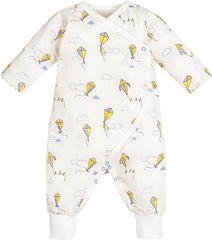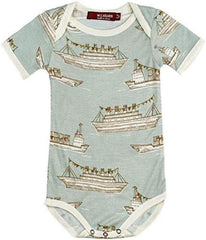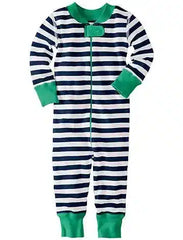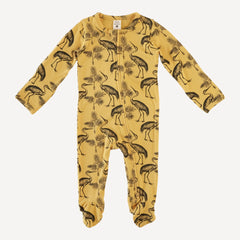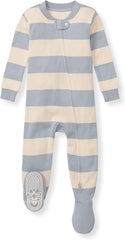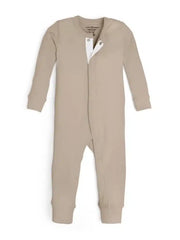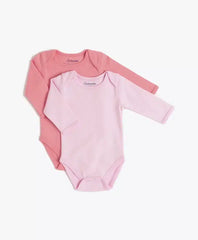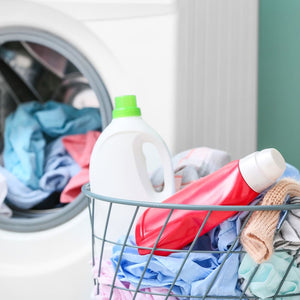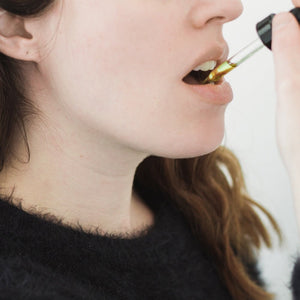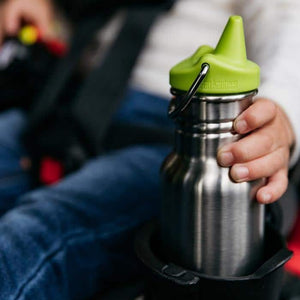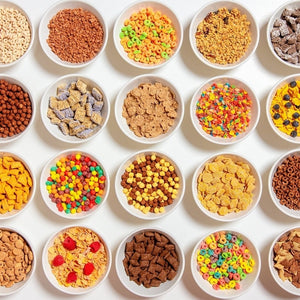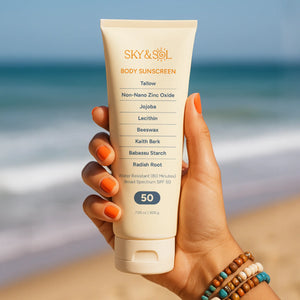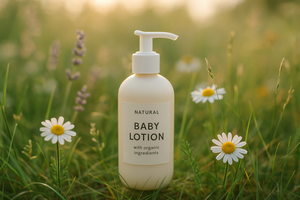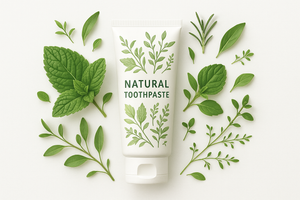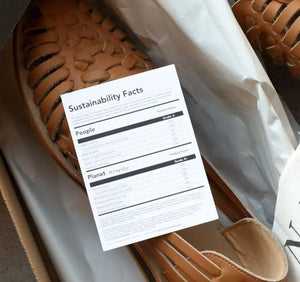If you’re a Gimme the Good Stuff reader, you likely to try to eat organically grown food and are taking steps to eliminate toxins in your home. So it probably seems like a no-brainer to insist on organic cotton clothing for your kids. But organic clothing is harder to find than the regular stuff (although becoming more and more available), and it’s significantly pricier. And what happens when your baby shower gifts are all really cute, non-organic onesies? My private clients ask me all the time: How important is it for my kid to wear organic clothing?
What is "Organic" Cotton?
Crops that are grown using organic methods means a lot to the environment, as well as to all the hands that actually work with and among the plants. Cotton that is not grown organically is treated with pesticides, herbicides, and chemical fertilizers. Harvesting organic cotton is much safer for the workers who pick it, and those living near cotton crops won’t have pesticides in their water sources. Plus, the producers can't use GMO crops.
But in terms of the person wearing the clothing? The toxins used to farm the fiber are almost certainly washed out in the processing of the fiber, so you're unlikely to get much pesticide exposure by wearing those clothes. I still tell my clients to wash everything before their kids wear it, because young children are especially vulnerable to the harmful effects of pesticides, and we know that exposure has been linked to the development of ADHD. (There are many other good reasons to wash your clothes before wearing them, which I will get to in a minute.)
Bottom Line: You're not exposing your kid to a lot of pesticides by putting him in a regular cotton T-shirt, but the chemicals washed out of the cotton that made his T-shirt ends up back in our environment. And you are exposing him to a lot of other gross chemicals in that conventional T-shirt, as you'll read below.
Other Toxins Used in Fabric Treatment
Most clothing is produced with synthetic dyes and is treated with toxic chemicals to provide wrinkle resistance, stain resistance, fade resistance, static cling resistance, etc. In fact, that “new” smell in clothing usually indicates chemicals--and if the smell lingers after a washing, the chemicals haven't been banished. Here's some of the bad stuff found in some conventional fabrics:
- Benzidine-based "azo dyes" are synthetic colorants, some of which may release carcinogenic amines (ammonia derivatives). Certain azo dyes have been recognized as human bladder carcinogens and are also detrimental to the environment. In particular, o-dianisidine is a classified as potentially cancer causing in humans.
- Formaldehyde is a known carcinogen (although unregulated in this country), and is used in clothing to prevent wrinkling. Many popular brands of baby clothing have been shown to contain formaldehyde in concentrations as high as 18,000 ppm (parts per million). Supposedly, up to 20 ppm for babies is safe, but I'd prefer zero, thanks. Short-term exposure to formaldehyde in fabrics can lead to a condition called contact allergic dermatitis, which is just a bad rash, but still no fun. In 2013, Minnesota became the first state to ban formaldehyde in certain baby products (lotions, soaps, and shampoos)--let's hope more states follow.
- Perfluorochemicals (PFCs) are a group of chemicals that work to repel water and stains, in particular grease. According to EWG, PCFs break down into a toxic blood contaminant called PFOA (perfluorooctanoic acid), and they are ubiquitous (over 90% of Americans are shown to have PFOA in their bloodstream). PCFs are found in cosmetics, household cleaners, packaged food containers, microwave popcorn, furniture, paper plates, and nonstick pans, amongst other places. In clothing, PFCs are usually lurking in wrinkle-, water-, and stain-resistant clothing, including those with Scotchgard and Gore-Tex tags.
- Nonylphenol ethoxylates (NPEs) are cheap surfactants sometimes used in the textile industry. They are also yucky hormone disruptors that wind up in our water supply when we launder clothing that contains them.
- Phthalates--yup, they are even in our clothing! Children are at a significantly higher risk than adults when it comes to phthalate exposure, and phthalates are often found in clothing dyes and in plastisol prints.
Can organic clothing contain these chemicals?
Up until recently, yes. A manufacturer could take organically grown cotton and dye it with toxic colorants and then treat it with formaldehyde to prevent wrinkling. In 2011, the USDA ruled that textiles (including mattresses) labeled as "organic" have a third-party certification, ideally GOTS, which ensures that the entire production process is gentle on the environment and on the person wearing the garment.
Organic Clothing Certifications to Look For
Organic standards for clothing are still not as clear-cut as they are for food. That said, buying organic cotton garments greatly reduces the likelihood that you are exposing your baby to endocrine disruptors and carcinogens when you lovingly wrap her in a brand new swaddle blanket.
You should continue to wash all clothing and blankets (using non-toxic laundry detergent) before use, preferably multiple times (but really, does anyone actually have time for that?!).
When buying organic cotton clothing, make sure the company has a third-party certification to back up their claim. In the US, solid organic certifications include:
- The USDA National Organic Program
- The Global Organic Textile Standard (GOTS)
- The Organic Trade Association (OTA)
If a company claims to use "natural" dyes, make sure they are certified by the Oeko-Tex Standard 100, which is the strictest out there.


